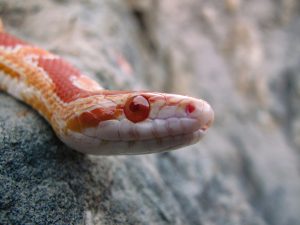Unveiling the Mystery: 5 Fascinating Facts About Snakes You Didn’t Know


Snakes have long been creatures of mystery, intrigue, and fear. From ancient myths to modern-day misconceptions, they are often misunderstood and unfairly vilified. However, snakes are among the most fascinating and essential creatures in the animal kingdom. They boast remarkable adaptations, intriguing behaviors, and ecological importance that deserve appreciation. Let’s dive into five captivating facts about snakes that may change how you view these slithering wonders.
Snakes Are Masters of Adaptation
One of the most impressive traits of snakes is their ability to thrive in almost any environment. With over 3,000 species worldwide, snakes inhabit deserts, rainforests, grasslands, and even aquatic ecosystems. They can be found everywhere except Antarctica, showcasing their incredible versatility.
Take, for example, the anaconda, a massive snake that thrives in the waterlogged regions of South America. It’s an exceptional swimmer and can remain submerged for up to ten minutes while hunting. On the other hand, species like the sidewinder rattlesnake are adapted to desert climates, moving across hot sand with unique “sidewinding” locomotion to avoid overheating.
This adaptability has made snakes one of the most resilient creatures on Earth, capable of surviving in challenging conditions that would overwhelm many other animals.
They Don’t Chew—They Swallow Their Prey Whole
Unlike most animals, snakes don’t chew their food. Instead, they have evolved to swallow their prey whole, a feat their highly flexible jaws made possible. A snake’s lower jaw is not fused like that of mammals, allowing it to stretch wide around its prey.
This adaptation enables snakes to consume animals much more significantly than their heads. For example, pythons have been known to eat antelopes, crocodiles, and even small deer. After consuming such a large meal, snakes can go weeks or months without eating again, conserving energy while their slow metabolism processes the meal.
This incredible feeding strategy is efficient and awe-inspiring, highlighting snakes’ unique evolutionary path.
Not All Snakes Are Venomous
A common misconception about snakes is that all of them are venomous. Only about 600 of the over 3,000 snake species are venomous. These snakes use their venom primarily for hunting, injecting it into their prey to immobilize or kill it before consumption.
Other hunting methods are used for non-venomous snakes. Many, like boa constrictors and pythons, rely on constriction. They coil around their prey, applying pressure until the animal can no longer breathe.
Even among venomous snakes, bites on humans are rare and often occur only when the snake feels threatened. Despite their venomous nature, species like the coral snake are shy and prefer to avoid confrontation altogether. Understanding this can help reduce fear and foster respect for these misunderstood creatures.
Snakes Play a Crucial Role in Ecosystems
Snakes are vital to maintaining ecological balance. They are both predators and prey, occupying an important position in the food chain. Controlling populations of rodents, insects, and other small animals help prevent overpopulation and the spread of diseases.
For example, a single rat snake can consume dozens of rodents yearly, reducing crop damage and protecting food supplies. Snakes are a food source for larger predators, such as birds of prey and mammals like mongooses.
Snakes are natural pest controllers in agricultural regions, making them invaluable to farmers. Their presence contributes to healthier ecosystems and ensures that other species’ populations remain balanced.
Snakes Are Surprisingly Intelligent
While they are often thought of as instinct-driven animals, research has shown that they are more intelligent than many people realize. Some species have demonstrated problem-solving abilities, spatial awareness, and even recognition of their keepers in captivity.
For example, studies on king cobras have revealed their ability to navigate mazes and remember specific routes to find food. Pet snakes, like ball pythons, can recognize routines and associate certain activities with feeding times, showing a degree of learning and memory.
This intelligence challenges the stereotype that we are purely reactive creatures. Their cognitive abilities, combined with their physical adaptations, make them one of the most remarkable animals in the world.
Changing Perspectives on Snakes
Despite their ecological importance and fascinating traits, they are often feared and misunderstood. Much of this fear stems from cultural myths and exaggerated tales rather than reality. However, learning about their behaviors, adaptations, and ecosystem contributions can help dispel these misconceptions.
They are not mindless threats—they are intricate, purposeful creatures that play a vital role in nature. By appreciating their unique qualities and understanding their importance, we can coexist with these incredible reptiles and even admire their role in the natural world.
It is more than just slithering reptiles; they are extraordinary creatures with adaptations and behaviors that defy expectations. They deserve respect and understanding, from their ability to adapt to diverse environments to their ecological significance. The next time you encounter a snake, whether in the wild or media, remember these five fascinating facts and see them for what they are: essential, intriguing, and awe-inspiring members of the animal kingdom.
